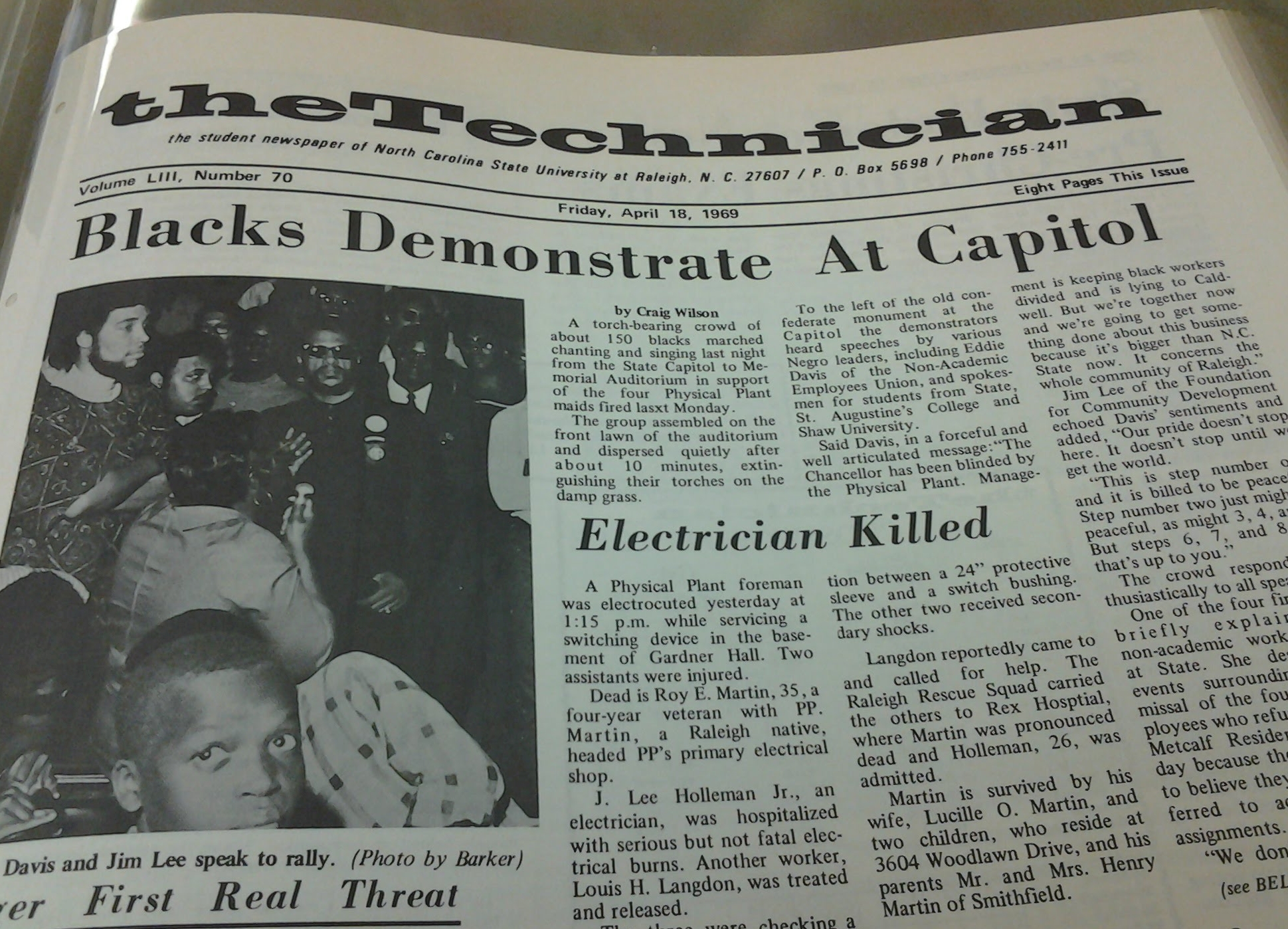
African-American Protests, Spring 1969 (Part 3)
We conclude our look at racial conditions at NC State 50 years ago during the spring of 1969. In the earlier Special Collections News posts (March 15 and April 23) we looked back at attempts by university facilities employees to improve their pay and working conditions and how the campus reacted. We left off with the firing of 6 employees on 14-15 April 1969 and the ensuing protests.
Protests Continue
On 17 April 1969 at the State Capitol in Raleigh, approximately 150 African Americans demonstrated in support of the fired workers. (White NC State students from a protest organization called “The Group” were “spurned” from joining.) The protest lasted only 10 minutes, during which time NC State students and others made speeches. NC State alumnus Jim Lee (from the Foundation for Community Development) spoke, as did Eddie Davis, 1 of the fired employees. He said, “Management is keeping black workers divided and is lying to [Chancellor John] Caldwell. But we’re together now and we’re going to get something done about this business because it’s bigger than N.C. State now. It concerns the whole community of Raleigh.” Another fired employee (not identified) said, “We want to be reinstated so we won’t lose our seniority and other benefits.”

The Group, excluded from the April 17 protest, held their own demonstrations on the Brickyard, starting on April 25. The Technician student newspaper reported an “average of about 30 people“ demonstrated just outside of the College Union (now the Erdahl-Cloyd Wing of the D. H. Hill Jr. Library). The Group indicated “We are going to continue this picket line until the Chancellor reinstates the four maids and two janitors that were fired and until the Chancellor meets the basic non-academic union demands.” They planned protests for 2-3 hours everyday. The picketing continued until at least May 5, and 2 days later the Technician published a letter to the editor from a protestor who lamented what he considered apathy on campus: “As some people passed they took the information we were handing out, but all too many simply passed by with a word or two of profanity, keeping their minds tightly closed to new ideas or the simple truth.” A few days later one of the people who “passed by with a word or two of profanity” wrote the Technician, facetiously asking forgiveness and requesting that he be given “the Group’s exciting new ideas,” adding “they might provide relief from the fuzzy leftist ideas which are rampant these days.”
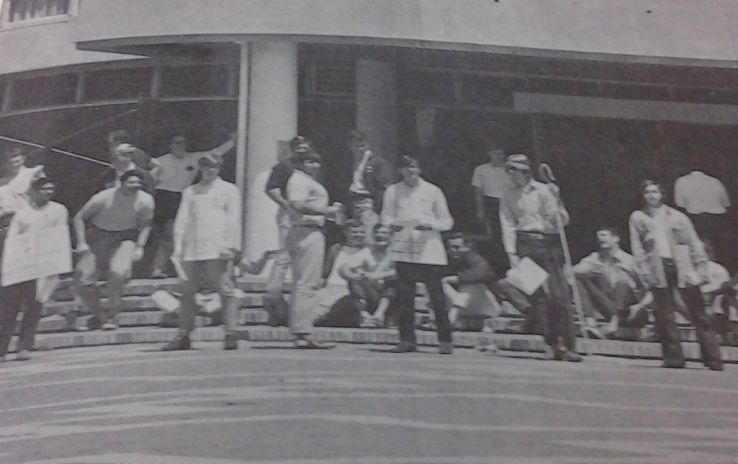
Also in late April, the Non-Academic Employees Union (which represented some facilities employees and had African American leaders) circulated a petition calling for the reinstatement of the 6 dismissed employees. It stated the union’s belief that the dismissals resulted from workers’ union activities and their demand “for the wrong done these people to be corrected.” After receiving signatures from 165 people, the union presented it to the chancellor.
Employees Convicted
One May 12, the Wake County District Court convicted employees charged with trespassing at the chancellor’s office on April 14. It fined Eddie Davis $100 (in lieu of 20-days jail time) and told Willa Mae Hinton and Margaret Bass Coleman to pay court costs. Nine others received fines of $25 each plus court costs. Four of the women custodians were acquitted.
The following day 20 students (including one or more members of The Group) met with Physical Plant Director J. McCree Smith, asking him questions mainly about African American employees and the Non-Academic Employees Union. About the dismissed women custodians, Smith indicated that their “firings came when they refused to work further in the men’s halls where they were assigned.” The Technician reported that “the students contended Smith was insensitive to these women’s dignity, and that just two days later all maids were removed from such assignments [in men’s dormitories].” Smith’s response was “that failure to work was just cause for dismissal.”
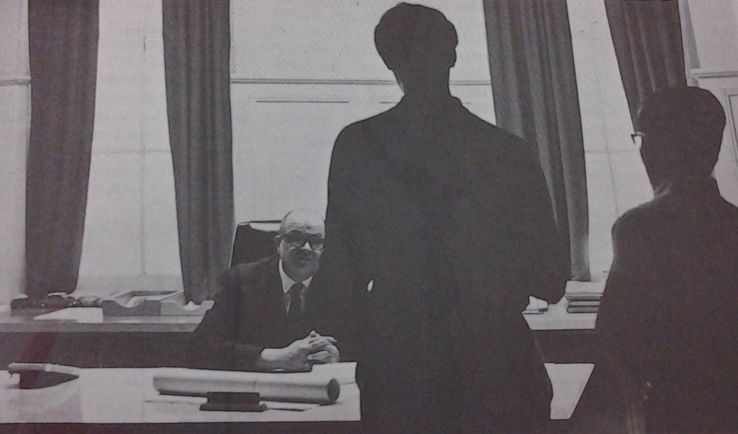
During the evening of May 14, a rally supporting the workers occurred on the Brickyard that included speeches from The Group’s members, facilities employees, and others. One person said “we colored men want our colored women to have some respect.” One instructor said he believed the faculty was “mainly sympathetic” toward the fired workers and that the administration “had been overly harsh.” Alumnus Jim Lee spoke, wanting a more forceful reaction from students, but other speakers talked more about the “need to get together—both black and white.” One said, “We make it together or not at all . . . Nobody in the modern world has all the answers.”
The Technician carefully described the rally as peaceful and outside the college union, knowing that Chancellor Caldwell earlier “warned that if a demonstration occurred at his home that night . . . extreme measures would be taken against all demonstrators.” In a letter to suspected protest organizers, the chancellor had stated, “you are asked not to impose upon the privacy of my home and family. Please understand that I mean what I have said and that I trust you will have both the good judgment and good manners not to make yourselves guilty of trespassing.” Also on the evening of the 14th, the Student Senate passed a resolution “expressing that body’s suspicion that the firing of the six non-academic workers last month were political” and that “the Student Senate strongly recommends that those employees who were victims of ploitical [sic] firings be immediately reinstated.”
The 21 May 1969 issue was the last Technician of the academic year. The editors gave out “a series of merited awards for generally unmeritous service” that included “The Empty Words Award” to ‘The Group “for lots of talk and little action” and “The ‘Bricks Are Beautiful Award” to campus facilities, “minus the janitors and maids.” The same Technician issue contained an article about student unrest on college campuses in which the author wrote
Let’s take a look at some of the incendiary situations here at State. Through ignorance and inaction on the part of the directors of Physical Plant administrators, the custodial staff has,[sic] for a long time been denied the benefits which are part of their jobs, such as education benefits, job seniority, coffee breaks, etc. It took some close calls with the ‘demonstration’ laws to get ‘presently-existing’ policies enacted and enforced.
The Technician has been the best source of information about the spring 1969 events. It was not published that summer, and when issues came out again in the fall, the newspaper said nothing more about the dismissed employees, who, in the end, were not reinstated.
Campus Reaction
As we saw in our previous posts, campus support of African American employees wasn’t unanimous, and what there was may have lessened after the violent April 14 demonstration at the Chancellor’s Residence that included Shaw University and St. Augustine University students. Up to this point, the Technician had been sympathetic to the employees, but on April 16 it published an editorial stating that the inclusion of students from other universities was “a serious mistake” because they “felt no obligation to act responsibly.” The editor claimed the outside students harassed bystanders, destroyed a WKNC microphone, and shouted insults at the chancellor. He stated, “Anyone who thinks John Caldwell is a racist (as the group chanted repeatedly) is plainly and simply an ignoramus.” The editor said the chancellor had been treating the workers fairly, based on information (perhaps faulty) he received from the facilities administrators. He added,
We just hope the unruly, disrespectful demonstration two nights ago hasn’t disillusioned him [the chancellor], that he will continue to probe into the matter and will use his considerable influence to negotiate a just solution . . . . But he’s not going to listen too much longer, we fear, if they [facilities employees] continue to bring in students from other campuses who don’t know the score, who shout him down with cries of ‘pig’ and ‘racist’ and who won’t give him the chance to show what a sincere and just man he is.
Another editorial on April 18 said the end of dormitory custodial service “was no ‘sell-out’ or ‘capitulation’ to the raucous protestors who besieged his [the chancellor’s] front lawn Monday night. Nor is it repression of their dissent.” The editorial concluded, “we must rid campus management of any racism, if it exists, and incompetence[,] if it is possible.”
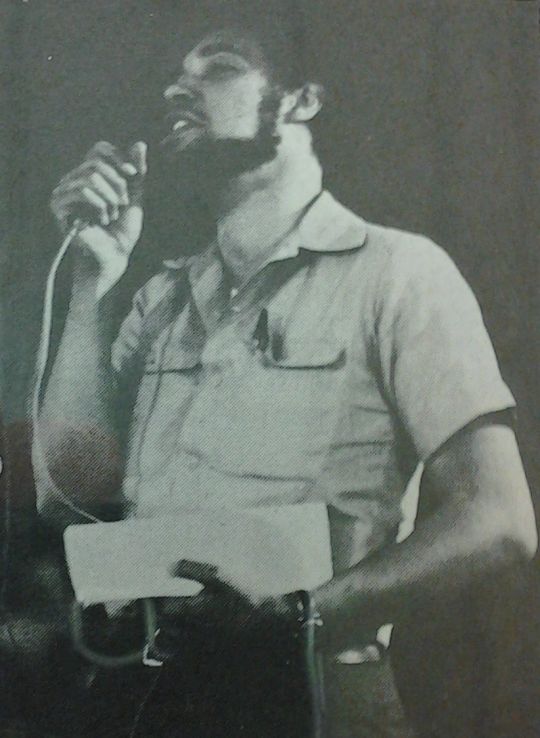
Strong support of the facilities employees continued among some students, however. The April 21 Technician had a letter to the editor from graduate students who believed that “the time has arrived when remaining silent is in effect supporting oppressive policies and tactics of this machine.” It continued:
We feel that the non-academic workers request are a simple and reasonable plea for human dignity . . . . We also feel that the recent flurry of firings and suspensions is outrageous reinstated [sic]. Most of all, we hope and pray that the white majority of this university will open their minds, hearts and mouths so that such obvious and malignant injustices can be ended.
The April 23 Technician reprinted an odd Raleigh News and Observer editorial by Jonathan Daniels that focused more on the end of custodial service in the dormitories: “To an old collegian the most startling news in the battle about the maids at N.C. State University was that the boys had had maids to attend them.” The piece mostly focused on dorm room cleanliness (or lack thereof), and it was written from a decidedly male point of view. The editor was silent about the complaints and requests of NC State’s custodians, and his claim that “the black maids will now work on blackboards instead of bathrooms” ignored the fact that some had lost their jobs.
University Addresses Requests
At the same time that the 6 employees had been fired in mid-April 1969, the university made a show of accommodating some requests that employees had made previously. On April 15, Chancellor John Caldwell sent a memo to campus supervisors “to re-emphasize certain policies which have been in existence and to provide instructions which will implement certain new procedures as indicated by requests submitted“ by the facilities employees on March 18 and 21. These included 15 minute breaks, vacation time, sick and annual leave, the official work week and its limitation to 40 hours, announcements of position vacancies, and the use of name tags and “Mr., Mrs., or Miss” in addressing employees. The employees had also “requested that additional effort be exerted to place qualified black people in supervisory and managerial positions whenever opportunity occurs.”
On June 4, Physical Plant Director J. McCree Smith issued a memorandum to his employees that stated “there is a continuous, deliberate policy to keep employees fully informed on all matters relating to the University, its objectives, and its relations with staff employees.” The memo focused, however, more on the relationship between management and employees. Clearly referring to events of the previous months, Smith said “the cooperative workman does not take the adversary or antagonistic position of attempting to disrupt, upset, tear down, or interfere with the University’s programs.” Elsewhere in the memo, he asked, “what will you individually, as a workman, choose to be – cooperative or adversary? I would invite each and all of you to join in the team effort to cooperatively achieve the University’s objectives and at the same time achieve improvements for the University staff.”
In July 1969 the university issued “Personnel Policies on Non-academic Employees" that really focused on employee grievance and disciplinary procedures. The document indicated “that the central purpose of this policy document is to improve the expectation of every employee that he will be dealt with sympathetically and justly in all aspects of his relationship with the University. It is obvious that if the spirit is right and is understood and appreciated at every level, then both grievances and disciplinary action can be reduced to insignificance.” The document did not address requests that facilities employees made the previous spring, partly because some had already been addressed in the chancellor’s April 15 memo and partly because some remained unresolved.
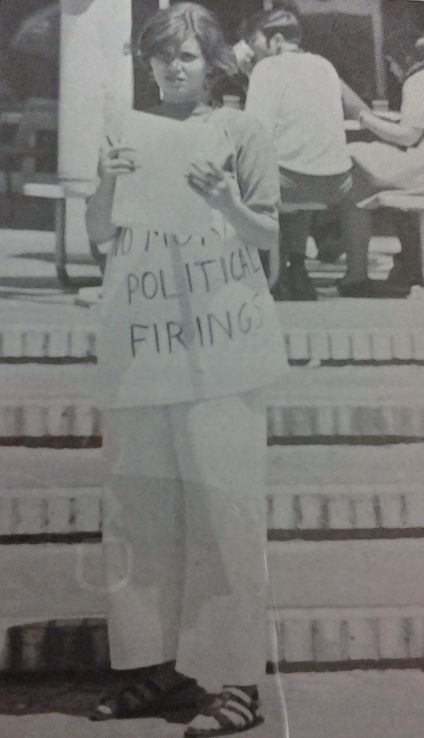
During the same summer, the University Employees’ Association came into existence, and it may have been succeeded the officially recognized Physical Plant Employees’ Association. It is unknown if any Non-Academic Employees Union members (now apparently disbanded) joined this new organization. On 22 July 1969, the new association submitted a list of 18 requests to the university’s business affairs office. It included such items as representation on the university’s traffic and insurance committees; changes in pay time; a 5-day, 40-hour workweek; better information about federal labor laws and regulations; meetings with business office management; and safety concerns. It also asked “that a Negro be considered for supervisory position in Laundry.” The university’s business manager responded that the university could meet some of the demands, but that others were out of his control and could only be referred to the state government personnel unit. He claimed the 5-day, 40-hour work week was impossible because “certain utility and security functions must be provided [at the university] on weekends,” and regarding hiring African Americans as laundry supervisors, he answered only that “if and when a vacancy occurs . . . [it] will be advertised and all applicants will be fully considered.”
In addition to the Technician articles linked above, some archival sources have been consulted for this post. “Recapitulation of Recent Events, the Non-Academic Employees Union” (1969) is a compilation of documents created by university physical plant administration concerning the employees, their requests, the protests, and university actions. It can be found in the Facilities Division Design and Construction Services Department Records (UA 003.004, Box 136, Folders 3-4). To access these documents please contact the Special Collections Research Center.